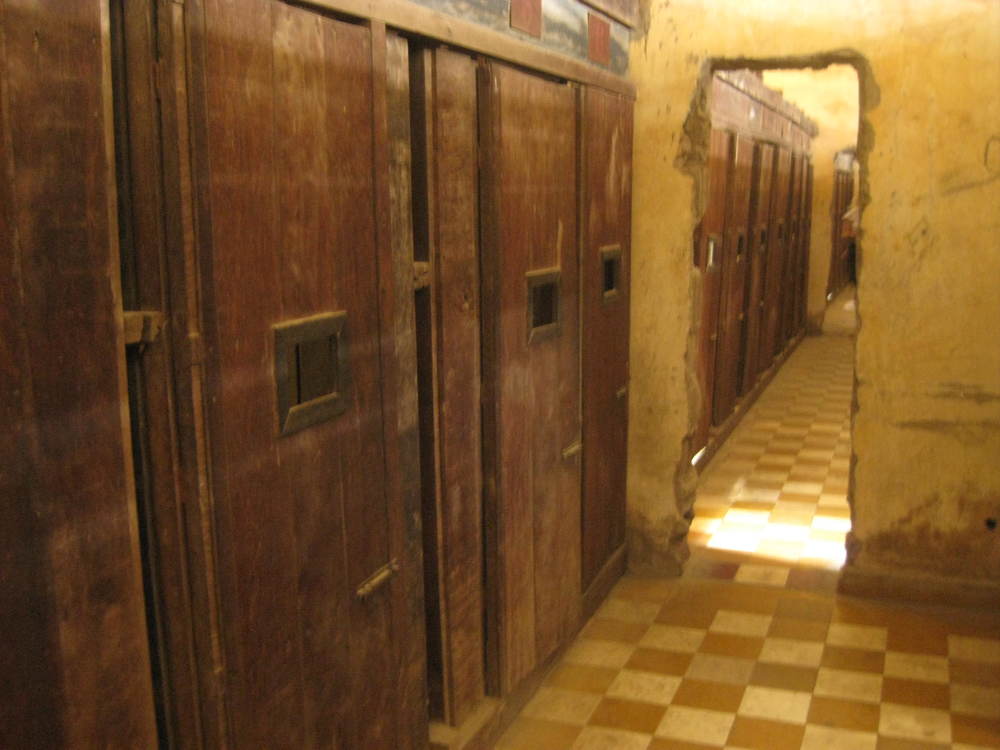A complete contrast to the horrors of the Killing Fields and the S21 prison, a trip to the heart of the ancient Khmer civilization at Angkor presented the positive brilliance that mankind is capable of. The monuments of Angkor are truly awe-inspiring and no words I sculpt could ever do justice to what the Khmers did with their hands on stone...I'll show you instead.
A Prison Without Walls
Cambodia has always been one country that I’ve been fascinated in. Rich in history and culture, Cambodia shows the two sides of mankind’s capacity for greatness – our greatness to imagine, to build, and to create …and on the flip side, our greatness to destroy. I took the last few days to explore this country of contrasts—making the pilgrimage to the wonders of Angkor to marvel at the truly magnificent ruins that is a testimony to man’s brilliance, but also visiting the horrors of the Killing Fields to bear witness to man’s cruelty. It was a bit of a rollercoaster as I went through the heights and the depths of the Khmer civilization.
Let me start with the oft overlooked atrocities of the Khmer Rouge…not exactly a huge tourist draw given the weight of the subject, but still an imperative visit for anyone traveling to Cambodia.
A quick background for those of you who are not familiar with Cambodia’s modern history…the Khmer Rouge (led by Pol Pot) ruled over the country from 1975-1979 implementing one of the most radical, and not to mention cruel, restructurings of a society ever attempted. Influenced by the communist ideology, the Khmer Rouge’s goal was to eliminate all remnants of the past – even declaring 1975 as “Year Zero” – and to create a peasant-dominated agrarian society. In reality, Cambodia was turned into a prison without walls as the Khmer people faced an onslaught of forced labor, starvation, and of course, political executions. Some 1.7 million people lost their lives (that’s 21% of the country’s population) during the time of Pol Pot…an outright genocide that continues to permeate the lives of many Cambodians today.
Last week we visited the Tuol Sleng Genocide Museum, which was known as Security Prison 21 or S-21. It was once a detention center set up by Pol Pot at the beginning of the Khmer Rouge regime. Over 20, 000 people were held there – most of which were political prisoners, monks, nuns, lawyers, doctors, and other members of the Khmer intelligentsia. I can’t even tell you how harrowing of an experience that was…there it stood, right in the middle of an ordinary street just barricaded by concrete walls around which regular Khmers would go about their day. As our tuk tuk driver pulled up to the entrance, we were surprised to know we had already arrived at our destination. From the outside, you could never imagine the atrocities that once took place within those walls.
But the moment you step foot inside, it’s as if you’re transported to the past. The actual building itself still looks very much as I imagine it did before. The rooms worn down, holes in the walls, the makeshift cells still largely in tact…perhaps it was just my imagination, but I could swear there were still blood stains on the ceiling of one room…it was all just too real and never before have I gotten so many shivers, not even when I visited Auschwitz two years ago.
What is most disturbing about S21 is the fact that it was once a high school. Each room was, in fact, a classroom…and the chalkboards still hang next to the many brick cells that once held innocent prisoners. To think that what was once supposed to be an institution of progress was turned into this menacing symbol—no, reality—of evil and barbarism. That, I think, is what stunned me the most.
But the day didn't end there. We then proceeded to go to Cheoung Ek, what is more widely known as the Killings Fields...a mass grave of victims bludgeoned to death with a hammer or some other heavy tool...bullets were too expensive to use and these people were obviously not worth the cost. It's a deceptively peaceful place with a large green field and even a small pond making for a perfect place for quiet reflection. It was once an orchard actually and butterflies continue to roam free as chickens walk within the depressions in the fields…pits where the dead (or the dying) were buried. You wouldn't think anything of it really and it would be easy to forget where you are, but if you look closely enough, you'll see fragments of the brutal past. And when I say fragments, I mean real, physical fragments: teeth, bones, and scraps of clothing lie on the ground untouched. Every time it floods, these remnants continue to resurface. It's as if the victims can not rest.
It was a harrowing experience to say the least, but a necessary walk into man’s heart of darkness…


